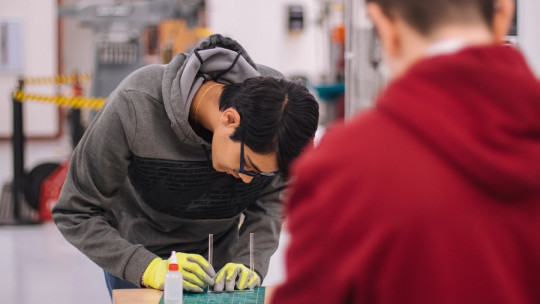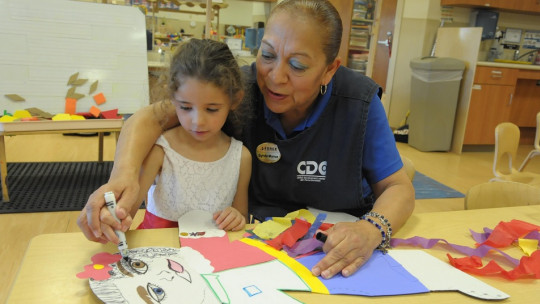
There are many theories that have been developed in the field of teaching, always seeking to improve existing methods.
One of the most important today is Charles M. Reigeluth’s elaboration theory Through these paragraphs we will be able to know more about this model, what is the methodology it uses and what are the qualities that make it one of the most relevant of the moment.
What does Charles M. Reigeluth’s Elaboration Theory consist of?
Charles M. Reigeluth’s elaboration theory is a methodology developed by this American educational researcher Reigeluth is an eminence in the generation of theories of instructional design, that is, the creation of teaching models that seek maximum efficiency in ensuring that students maximize the learning of the new content proposed. It is within this framework that elaboration theory is included.
The key to this theory would be organizing this teaching from the simplest to the most complex assumptions, therefore increasing the level of demand in a totally progressive way and making it easier for the student to consolidate each phase before facing the next one in level of complexity. Furthermore, another point that Charles M. Reigeluth’s theory of elaboration highlights is that at the end of each teaching stage a summary of everything seen so far must be made.
This progressive consolidation in each phase is one of the hallmarks of this methodology. Reviewing all of the above every time one of the lessons is finished is a very powerful system in order to fix the contents in the learner’s mind, since allows you to establish associations of concepts and achieve that gradual learning that this method seeks
Another of the qualities that Charles M. Reigeluth’s elaboration theory highlights is that of using the power of real context or examples when teaching strategies, so that they are not mere empty concepts, since by having a concrete scenario on which to apply these teachings, it will be much easier for the student to assimilate the new information and ensure that this knowledge is lasting.
Components of elaboration theory
Charles M. Reigeluth’s Brewing Theory It is designed to be carried out thanks to seven fundamental components that must always be present if we want to take advantage of the full potential of this methodology and thus achieve the best possible results when teaching students through it. Let’s look at each of them in greater detail.
1. Elaborative sequence
The concepts and strategies that are going to be taught must be developed through a sequence Furthermore, we already saw at the beginning that this sequence has to be designed in such a way that it starts with the most basic elements and these gradually become more and more complex. It is the main characteristic of Charles M. Reigeluth’s elaboration theory.
2. Prerequisites
This sequencing establishes prerequisites before starting each new learning phase that refer to the consolidation of one stage before being able to start the next one In this sense, if we are using the theory of elaboration to teach concepts that are divided into five stages, we will not be able to move on to stage two until one has been correctly learned, nor to stage three until the same has been done with two, and so on.
3. Summary
We also saw in the previous point that one of the characteristics that define Charles M. Reigeluth’s elaboration theory is the establishment of summaries that are located at the end of each phase. Each summary must include not only the concepts developed in the completed level, but also those of all the previous ones, so that they are cumulative.
That is to say, Each stage that we start and finish will include a summary of everything that has been seen up to that point a fantastic mechanism to ensure that the student does not forget any of the teachings that we have previously taught him, since the objective is for all knowledge to be consolidated.
4. Synthesis
Likewise, and given that we are seeing that concepts are cumulative, it is important to be good at synthesizing the material seen until then, otherwise we run the risk of needing too much time to revisit content that, once seen, can be condensed into their most basic components without needing to repeat everything from the beginning Therefore, synthesis will be another component of Charles M. Reigeluth’s elaboration theory.
5. Analogies
Just as important as using summaries is establishing analogies and examples so that the learner can visualize the theoretical concepts that we are putting on the table in a more realistic scenario. These analogies will help you create a mental image that, in collaboration with the theoretical explanation, will facilitate the learning of the entire block of knowledge that we are sending to you.
6. Cognitive strategies
In order to facilitate learning, Charles M. Reigeluth’s elaboration theory indicates that The instructor or teacher can use different cognitive strategies, adapting to the characteristics of the student, so that the concepts are assimilated in the most efficient way. These cognitive strategies refer to the different ways in which we can use our intellectual abilities to achieve learning.
7. Student control
The last of the points that make up the characteristics of Charles M. Reigeluth’s theory of elaboration is that of student control. This control is given by all the points that we have seen in the list, since The set of all of them allows the learner to be certain of being able to generate adequate learning at any phase returning to it if necessary and taking advantage of the resources at your disposal.
In this way, the person ensures that they can understand the level they are studying without being forced to move on to the next one prematurely. The idea is to provide all the facilities so that the current phase is correctly consolidated, without leaving gaps in the learning process that gradually reduce the effectiveness of the methodology in question. This is what guarantees the correct functioning of this strategy.
The author of this methodology
The creation of Charles M. Reigeluth’s elaboration theory, as well as others that this author developed within the field of instructional design theories, They represented a great leap in the field of education, especially in the United States Charles Reigeluth captured his models primarily through a series of four volumes called Theories and Models of Instructional Design.
They detail the theory of elaboration itself but also other very important ones such as the theory of simulation. Reigleluth has dedicated two decades of research in this field to fight for the reinvention of methodologies traditionally used in American schools This purpose is also reflected in two of his major books, Reinventing Schools: It’s Time to Break the Mold and Vision and Action: Reinventing Schools through Competency-Based Personalized Education.
Charles Reigeluth was able to carry out formative research, that is, directly applying his methodologies in the field and thus discover what his real potential was and know the specific situations that favored or hindered learning, therefore obtaining very valuable information for be able to polish your models.
He also researched in depth about the technological requirements that student-centered methodologies (like the ones he proposed) needed. Thanks to his studies with Indiana University verified that there were four main issues that required the use of technology
The first of them would be to be able to maintain the records necessary for learning. The second would consist of everything related to the establishment of the goals that have been previously planned. Next would come the program instruction itself. And it would end with the evaluation through which the level of effectiveness of the program would be checked, verifying whether the student has correctly acquired the proposed contents or, on the contrary, it is necessary to return to them to consolidate them.
It is clear that Charles M. Reigeluth’s elaboration theory is only part of a lifetime dedicated to improving educational models.








